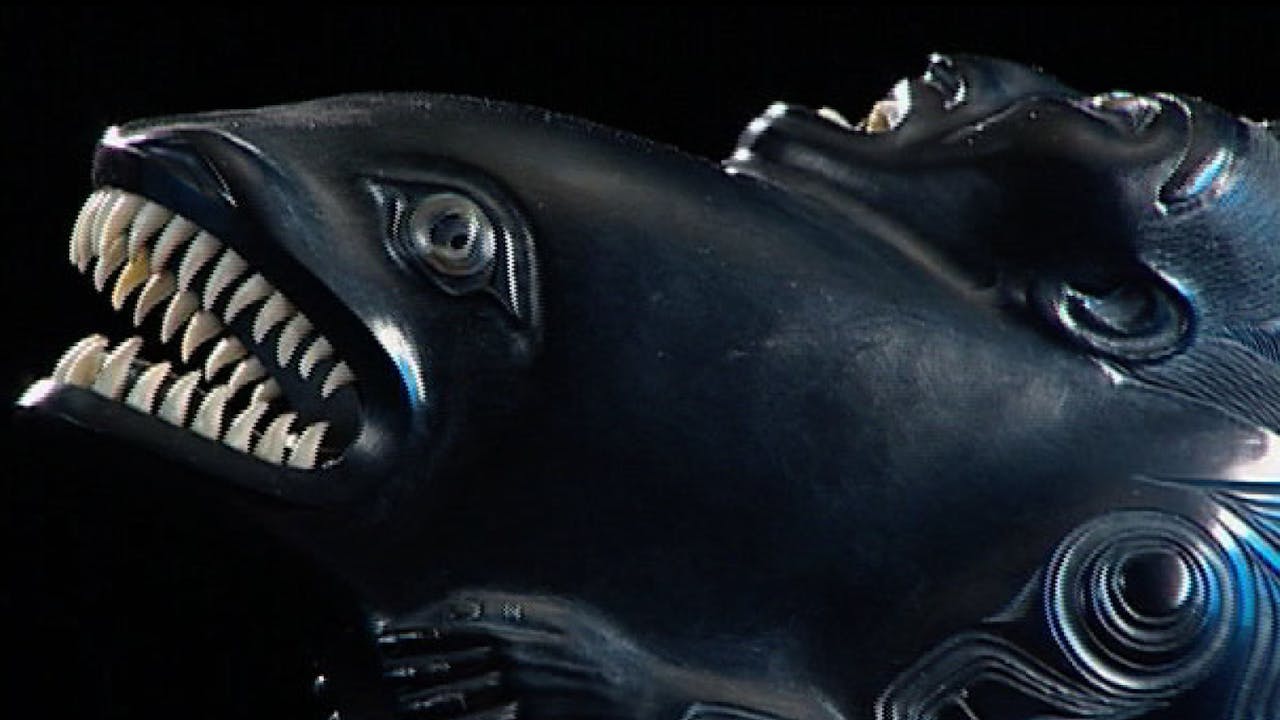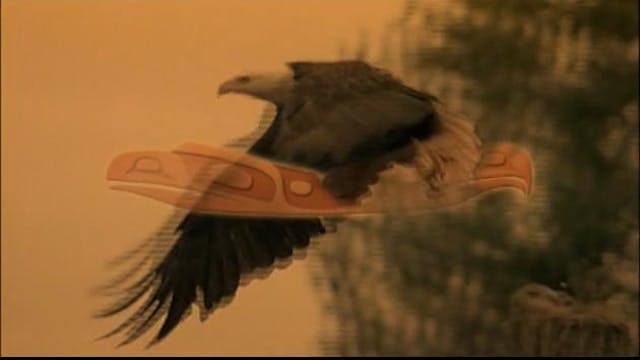Ravens and Eagles: Paradox of Attribution
“Paradox of Attribution” Series 1 Episode 13
(2002, 24 minutes)
Haida art had reached a very sophisticated stage of development by the time of the Haida people's first contact with Europeans. Nearly every household item was adorned with carved or painted crests. Missionaries saw the art as the work of the devil; but ethnologists were looking for material culture they could use in museum dioramas in New York and Chicago. There has been debate in academic circles about who created turn of the century masterpieces of Haida art. In a discussion about the old Masters, Paradox of Attribution re-visits some of the artists in a final roundup of Haida artists defining Haida art. Many historical masterpieces are featured in this sweeping overview. Director Marianne Jones, herself a Haida eagle clan member, leads a tour of some of the old village sites where art once stood on the shores. She poses an interesting dilemma: Does attribution really matter? Or is it best left as a paradox?
Shot on British Columbia's rugged northwest coast, Ravens and Eagles: Haida Art delves into the roots of traditional Haida art and traces the genesis of today's generation of Haida carvers, singers, dancers, weavers and performers. Over two series, Ravens and Eagles explores some of the wider historical and political issues of the repatriation of Haida artifacts, the vital potlatch ceremony once declared illegal by the Canadian government, and the fight to preserve old growth forest on Haida land. Created by Haida filmmaker Marianne Jones and Jeff Bear, Ravens and Eagles approaches Haida art and culture from the Haida perspective.
Produced by: Jeff Bear, Marianne Jones, Ravens and Eagles Productions
For educational licensing (DSLs) and educational DVDs visit https://movingimages.ca/
-
Ravens and Eagles S1E13 Paradox of Attribution


